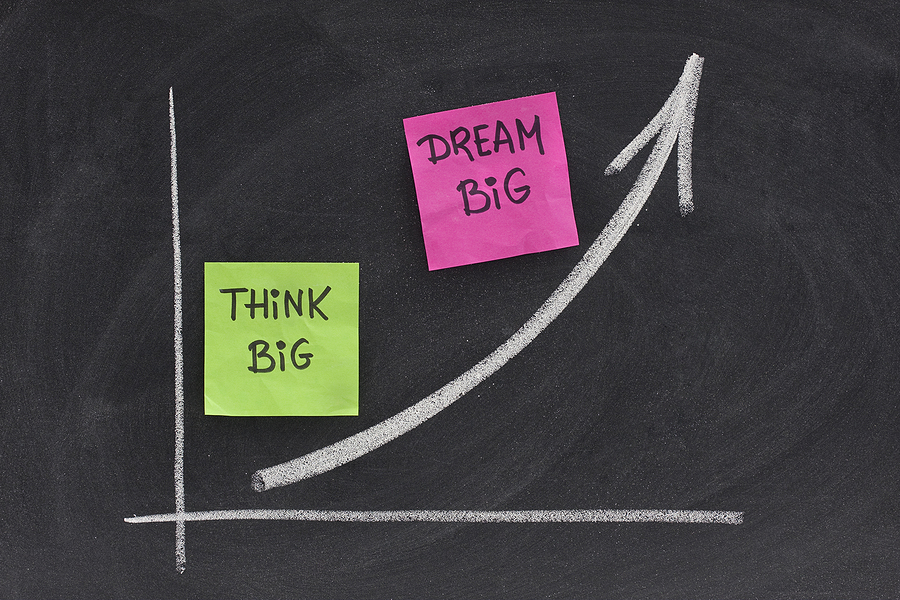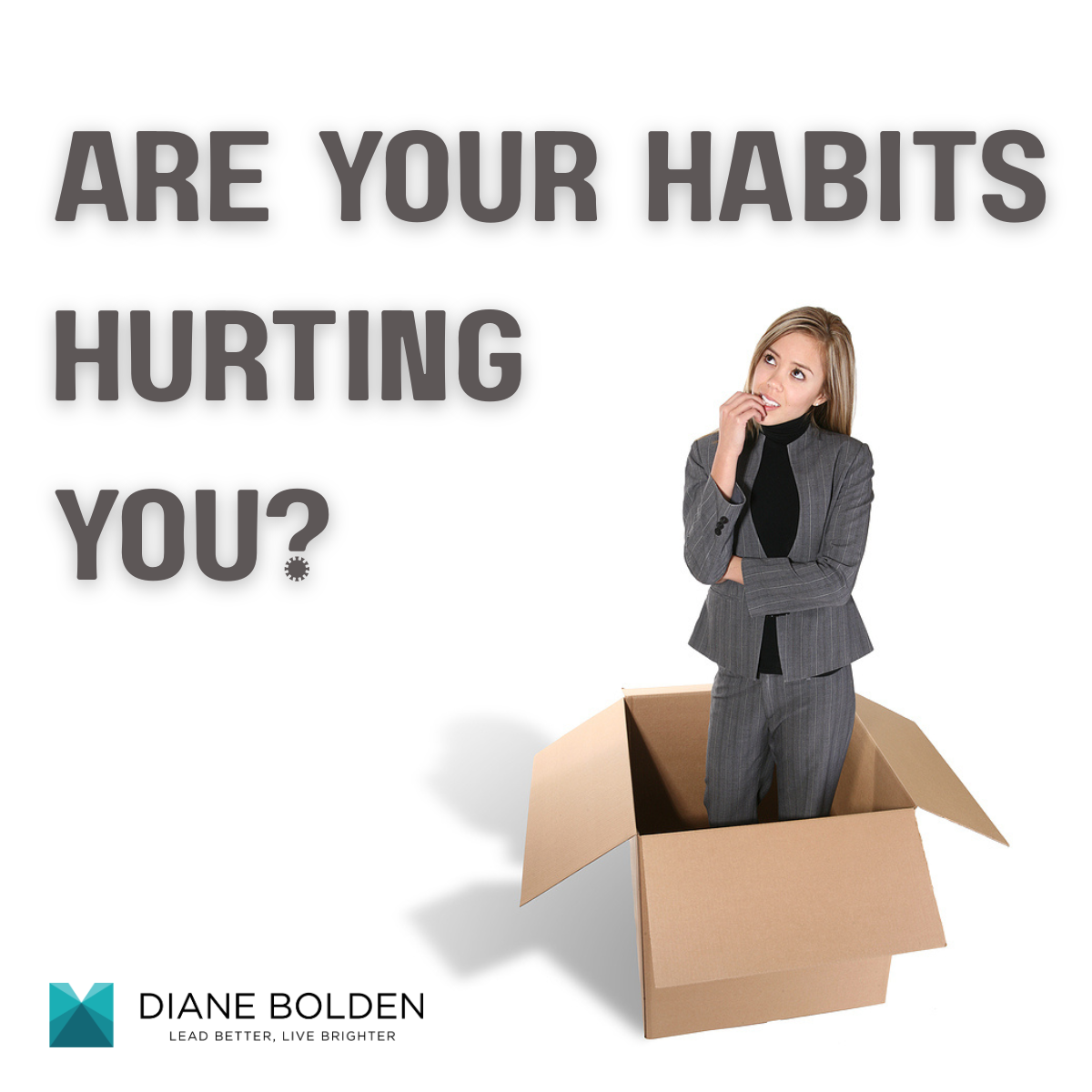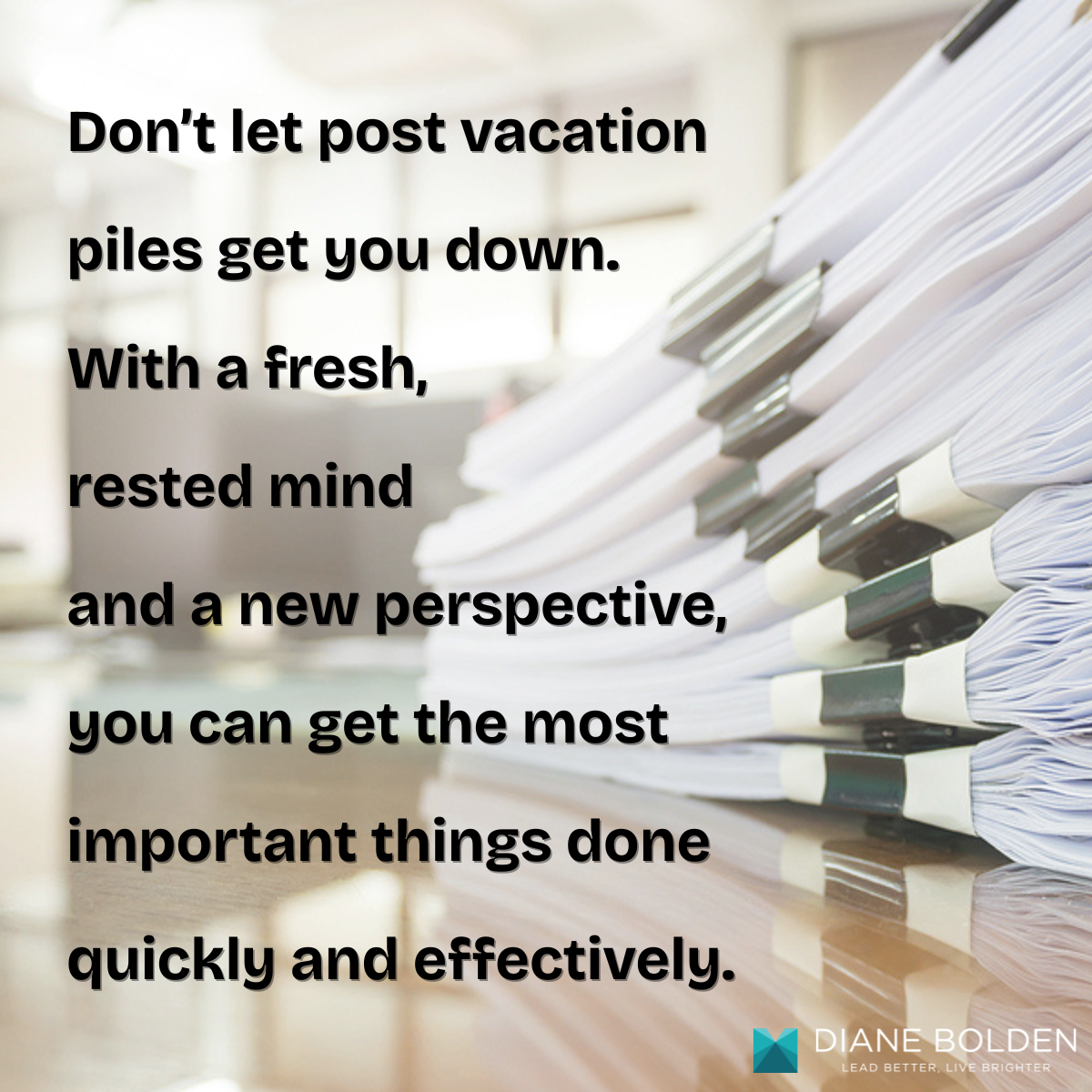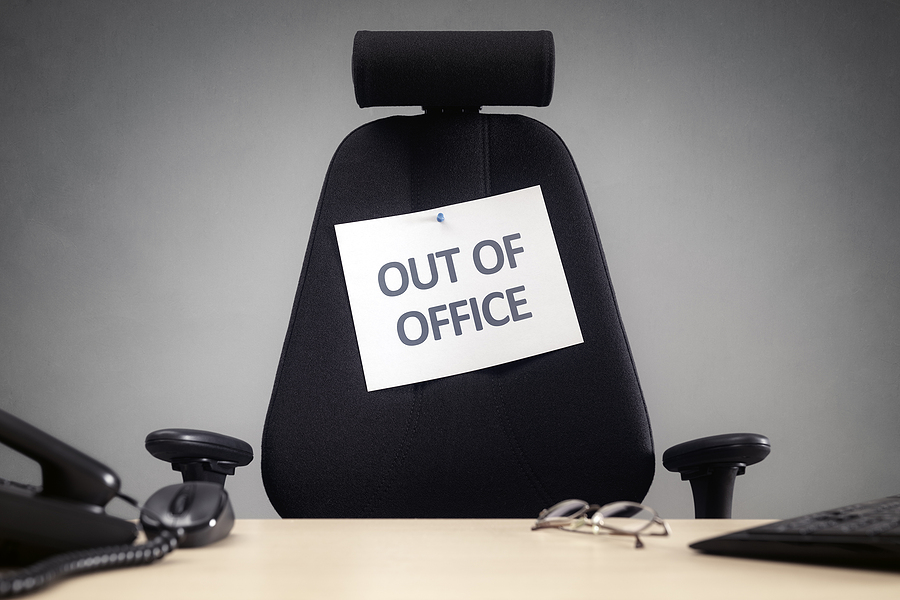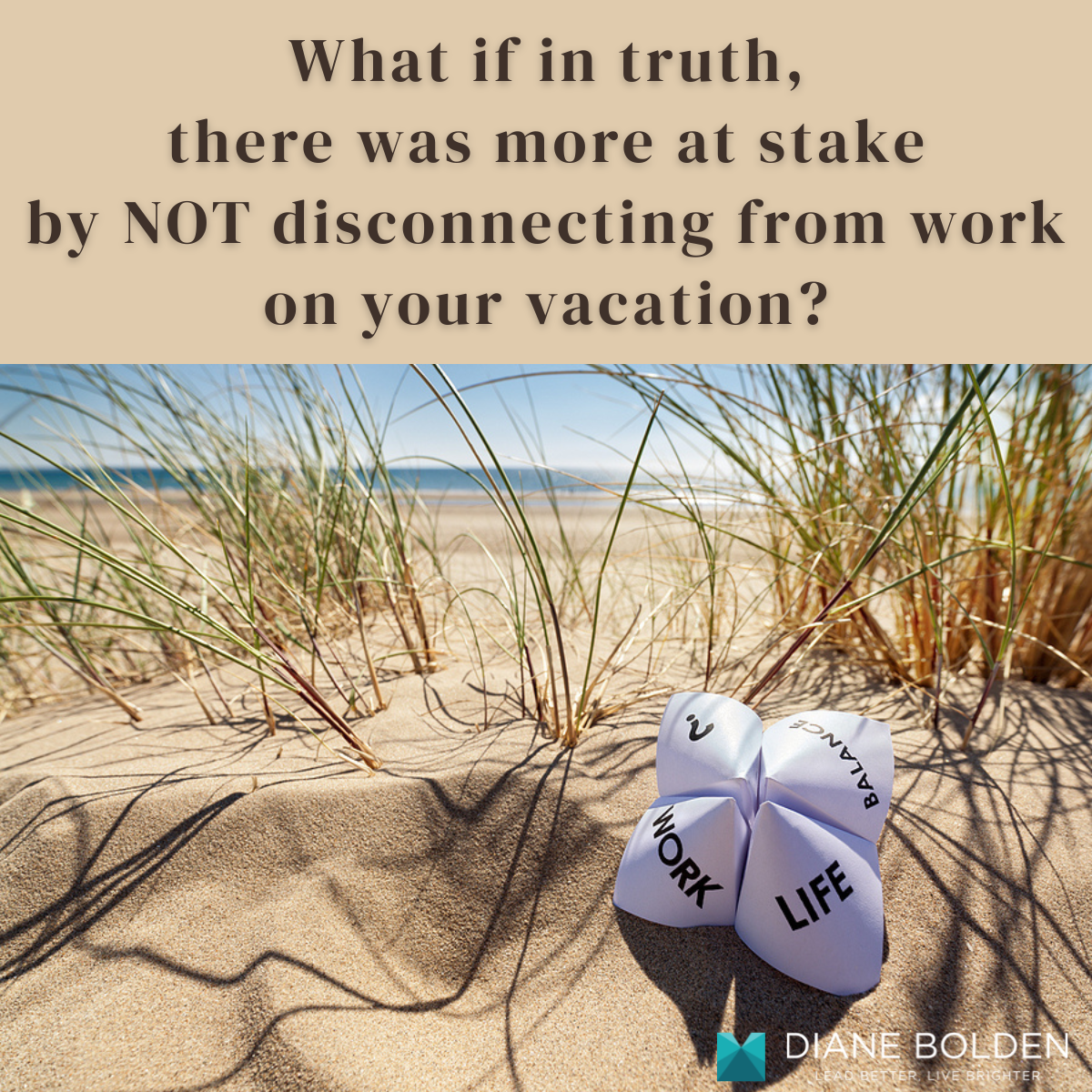All posts by Diane
How to Change a Habit That is Hurting You, Part 2
You’ve made a commitment to yourself, and you are determined to change that self-defeating habit once and for all. What do you do next?
STEP TWO: Surround yourself with reminders of what you are moving toward.
Though you may not have already experienced the pleasure you will gain by moving beyond your old habit and engaging in something new, your mind can help you to imagine it and make it real for you. It does this in much the same way that it can also magnify your fears and come up with all kinds of scenarios that could have you shaking in your boots.
Take control of your mind in advance. Envision the change you are making and what you imagine it will bring you.
If you are trying to get control of your temper, imagine what it will feel like to be able to calmly engage in discussion with someone without losing your head. Envision yourself shaking hands with people and leaving meetings feeling as though you have strengthened relationships rather than damaged them.
See if you can find a symbol or image that helps you to move into that feeling whenever you look at it. And put that visual reminder somewhere where you will see it often.
Maybe you are wanting to break the habit of staying in your comfort zone rather than taking the bold actions you dream about – like expanding your business, going after a new market, creating a new program or product, or creating and empowering a solid team that can do more together than you ever could alone.
Envision what acting on your dream will give you and see if you can experience it in your mind as though it has already happened.
Find pictures that evoke those feelings for you and get you excited and motivated to take steps to make it happen. Look at them every day, several times a day and feel those feelings when you do.
The key to transformation comes when you move from seeing the future you want to create to embodying it.
When you feel as though you are getting sucked back into old behaviors you are trying to leave behind, or when you are discouraged about your progress use your reminders to bring you back to your intention and recommit to yourself. Then take action in the new direction you want to move in.
The steps I’ve been sharing with you over these last few days are a small part of what I teach and coach executives to implement in The Pinocchio Principle Unleashed, a thirteen-week, a seven-module virtual leadership development program designed to help business professionals like you maximize your performance, minimize stress and pressure and enjoy a more fulfilling life both on and off the job (and lead others to do the same).
There is a whole lesson dedicated to visioning and embodying your future that participants have told me has been instrumental in helping them create and achieve what they most want to achieve and experience. Message me if you’d like more information.
Next week, I’ll share step three of How to Change a Habit That is Hurting You.
Here’s to your success!
How to Change a Habit That is Hurting You, Part 1
The first step to changing a habit may be working against you is to make a decision, a declaration and a commitment to yourself.
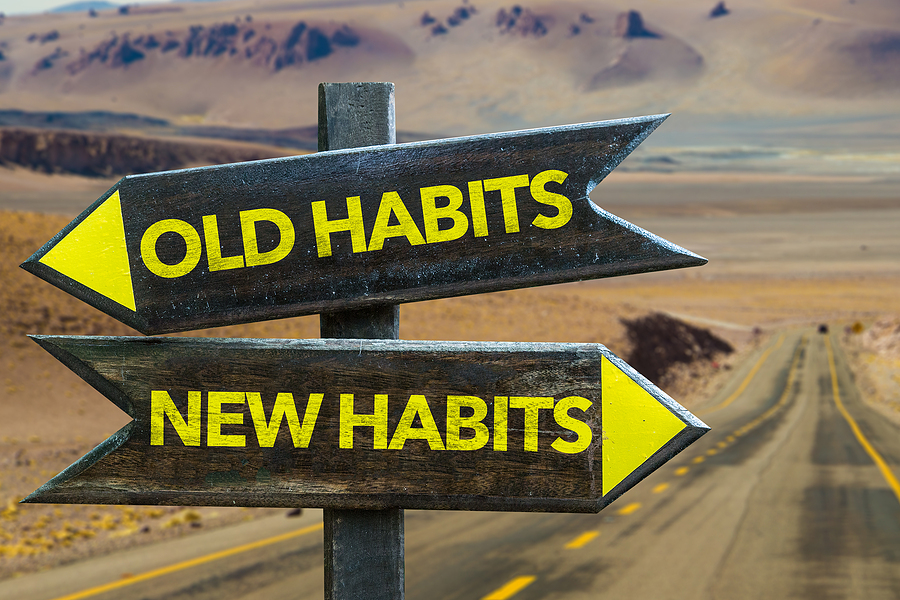 There is power in willingness. I’m talking about more than good intentions here, though that is where it all starts. People are at the threshold of change when the pain of one behavior becomes greater than its payoff. But for that momentum to take hold, the perceived payoff of the change must be greater than the seeming pain of giving something up.
There is power in willingness. I’m talking about more than good intentions here, though that is where it all starts. People are at the threshold of change when the pain of one behavior becomes greater than its payoff. But for that momentum to take hold, the perceived payoff of the change must be greater than the seeming pain of giving something up.
The trouble is you may not really know what that payoff will be. And though you also may not know what that change will entail, your mind will be off and running creating scenarios that have you believing it’ll be far harder than anything you can imagine.
And that can become a real showstopper if you aren’t ready for it.
It’ll keep you from getting out of bed in the morning. It’ll have you playing small when you are on the verge of bold, courageous action. It’ll make the old beaten path you’ve been traveling seem preferable to heading into the uncertainty of whether you will be able to do whatever you are learning to do in place of your old behavior.
So, you have to make a commitment to yourself.
You must get really clear in your mind that you will no longer tolerate your old way of doing things and decide that you will do whatever it takes to move beyond it.
It helps if you write it down. And it also helps if you tell someone else about it – someone who can remind you of all the reasons you are doing it, of what you have to gain, and of what you are rising above and why.
Think about a habit you would like to move beyond.
- How has it been hurting your effectiveness? Your credibility? Your peace of mind?
- What would you gain by rising above it?
- What could you do if you no longer fell into that pattern of behavior?
- How would you feel?
Are you ready to make a change?
If so, make a commitment right now to yourself. Write it down and then share it with someone who will support you as you endeavor to carry that commitment out.
As promised, in coming weeks I’ll continue to deliver to you a five-step process for changing habits that are getting in the way of your success – the impact you can make and the satisfaction and fulfillment you can enjoy both on and off the job.
These steps are a small part of what I teach and coach executives to implement in The Pinocchio Principle Unleashed, a thirteen-week, seven-module virtual leadership development program designed to help business professionals like you maximize your performance, minimize stress and pressure, and enjoy a more fulfilling life both on and off the job (and lead others to do the same).
Next week I’ll share with you the second step to breaking a habit that is hurting you.
Here’s to your success!
Are Your Habits Hurting You?
Often, we don’t seek help until things begin to hurt us. And though it’s unfortunate that we wait until things become painful to try something different – it is often just the springboard we need to find better ways of doing and being.
- Maybe your last temper explosion led people to no longer want to support you, and you are ready to figure out ways of better channeling your anger.
- Maybe you have totally burned yourself out and are starting to realize that there has to be a better way of doing things.
- Or perhaps you’ve finally realized you’re never going to be able to sustain your success and take your game to a new level as a leader of others if you insist on doing everything yourself.
When your habits begin to hurt you, you get to decide what you are going to do about them. It’s a crossroads that can be challenging – because though you might be experiencing pain and discomfort with your habit, it likely will seem as though anything you might need to do differently will be even worse. And that is the root of resistance.
But what I have found through my own experience, as well as that of so many others – friends, clients, colleagues – is that the pain caused by resistance is far worse than anything it would have you avoid.
Maybe you don’t need to wait until it comes to a head.
We all have habits that no longer serve us. And you already likely know what habit (or habits) are bringing you down. So, the question is, what are you going to do about it?
Over the next few weeks, I’ll be walking you through a five-step process for changing the habits that hurt you. It’s a small part of what I teach in the Pinocchio Principle Unleashed, a seven-module virtual leadership development program designed to help business professionals like you maximize your performance, minimize stress and pressure and enjoy a more fulfilling life both on and off the job (and lead others to do the same).
For now, take stock of the things you do on autopilot that may not necessarily be in your best interest – and begin to notice any negative impact those behaviors may be having on your work or in your life. Making needed change in those areas could yield rich dividends. And it all starts with conscious awareness and a willingness to consider doing things differently.
“When we are attentive to our actions, we are not prisoners of our habits.” – T. K. V. Desikachar
How to Get Those Engines Running Again
Over the last several weeks I’ve been posting tips for leaving and returning from vacation. I took my own advice and prepared those articles to go out while I was enjoying some out of office time of my own.
But now I’m back. And I had a few more insights about how to get back in the swing of things as I navigated my own re-entry. This week’s video features four tips that helped me get back into my groove – and I’m confident they will help you too.
While these suggestions are timely after you’ve returned from being away from the office, they are also entirely fitting for anytime you are having trouble getting something done, approaching a project you’ve been putting off, or stuck in the middle of something that has you feeling stalled.
Here’s to coming back better and brighter!
Diane
How to Work Quickly and Effectively Through Post Vacation Piles
You’ve returned from a fabulous vacation feeling like everything that happened while you were away has coagulated into an overwhelming pile that seems completely impermeable.
Now what?
In my last post, I discussed the second vital strategy for coming back strong after your vacation: (2) Take advantage of the opportunity to see things from a fresh perspective. A part of that strategy included identifying all the things that are competing for your attention. Not as a “to do” list, but rather an inventory of potential items to be addressed.
Getting things out of your head has a way of freeing up your mind. But that sweet release is quickly replaced with angst and anxiety if you believe you must accomplish all that is written there. That’s when overwhelm sets in and threatens to get in the way of action.
That leads us to the third strategy…
(3) Use discernment to determine your highest priorities.
Take a moment to get clarity on your most important desired outcomes. See if you can go beyond the outcomes themselves to dial in what those accomplishments will give you – forward momentum? closure? pride in your work?
Now, from that mindset, ask yourself the following questions,
- Which of the items listed are truly most important?
- What needs to get done right away, and what can be deferred?
- What MUST I do myself? And what could I delegate to others?
- What, if anything on this list, really doesn’t need to get done at all (or could be minimized in some way?)
Once you’ve identified your priorities, start with the most important. If you can focus on one thing at a time and bring all your presence to getting that thing done, you’ll do it more quickly and effectively. And then you can move onto the next thing with the same laser focus and intensity.
Remember, one of the important functions of taking a vacation is to allow yourself the rest, relaxation and recharge necessary to come back to your work with new vitality, energy and enthusiasm. It could usher in a whole new way to simplify your life and work and focus on bigger, more important, strategic ventures and initiatives.
Approaching your post vacation re-entry by taking the steps outlined above (and covered in previous posts) will allow you to leverage your time away to unleash new levels of performance in yourself, as well as those you lead.
If you want to learn to infuse your work year-round with the same freshness and inspiration you feel after a good vacation, message me to learn about a new program I’ll soon be making available to a limited number of executives.
How Your Vacation Can Keep on Giving (long after you return)
If you worry that taking vacation might lead you to lose focus or traction with your work, you’re not alone. But…. What if you could actually improve your focus, ingenuity and performance BECAUSE you spent time away?
Last week I posted about the first step for coming back strong after your vacation: (1) Take a moment to get clear on what you most want.
Today, we’ll explore the second strategy…
 (2) Take advantage of the opportunity to see things with a fresh perspective.
(2) Take advantage of the opportunity to see things with a fresh perspective.
Being creatures of habit, we tend to jump back into the same ways of doing things that led us to feel like we desperately needed a vacation in the first place. Going on vacation creates a pattern interrupt that you can leverage in your work.
In much the same way a new employee sees problems and solutions from a different angle than the more seasoned team members, your time away allows you to view your work with new eyes.
Notice what’s going through your head without allowing it to disturb your peace of mind.
- Are you frustrated that things didn’t run as smoothly as you wanted them to while you were away?
- Is there a voice screaming at you to jump in and start answering emails, returning calls and/or wading through piles of paper before you lose another minute?
- Are you feeling burdened by the weight of what seems to be more than you can humanly process in the span of a day/week/month?
These thoughts are to be expected. We all have them. But they don’t have to push you into a panic-filled, adrenaline-provoked response that keeps you from being effective. A lot of our stress is a result of comparing what is happening to what we think should happen, which takes us out of the moment and puts us in a battle in our heads, adding unnecessary stress and pressure.
Instead, come back to the moment and see if you can simply assess it without judging.
Be mindful of telling yourself stories about what it means, or what is going to happen next. Before you jump into action, do an assessment of all the things that are competing for your attention. Don’t think of this as a “to do” list, just an inventory of potential items to be addressed. Add to it anything else that you feel compelled to act on.
Getting things out of your head frees your mind to utilize discernment, so that you can sort through what would otherwise overwhelm you and identify what your true priorities are. In my next post, I’ll talk you through a way to do just that.
And if you want to learn to infuse your work year-round with the same freshness and inspiration you feel after a good vacation, message me to learn about a new program I’ll soon be making available to a limited number of executives.
How to Ease Post Vacation Re-entry
No matter how much you love your work, returning from vacation can be difficult.
The barrage of emails, phone messages and projects that often pile up can feel heavy, burdensome and downright overwhelming. You may feel soft and ill equipped to address them. After all, it took a while to settle those engines down. And there is only so much even the boldest of coffee can do for you.
 But vacation re-entry doesn’t have to be a stress filled experience.
But vacation re-entry doesn’t have to be a stress filled experience.
In fact, when you approach returning from vacation consciously and intentionally, you can make the most of the relaxation you enjoyed in much the same way that you maximize any investment. That precious down time you allowed yourself can put you ahead of the curve rather than behind it.
This week and next, I’ll be exploring strategies for doing just that. Let’s start with the first…
(1) Get clear on what you most want.
The beauty of a vacation is that it allows you to get some distance from the myriad of little things that keep you from seeing the bigger picture in your life. You can reconnect with what’s most important to you – and get clarity on what you want more of and less of.
It often happens on more of a feeling level than a thinking level. You may find yourself buoyed by possibility, even if you aren’t sure exactly what it is. Time away ushers in new energy that allows us to feel life could be so much simpler, richer, satisfying and fulfilling.
Don’t let that feeling disappear just because your vacation has come to an end. Before you jump back into your work, tune into the bigger picture of what you want to experience and see if you can feel it as though it already exists.
Do you want more simplicity? To cut through complexity with confidence and ease? To infuse your work with more optimism and lightness?
How do you want to feel at the end of the day? See if you can go there and experience it now. Imagine yourself driving home feeling grateful for what you accomplished and enthusiastic about what is on the horizon. Then return to the moment and approach your day from that frame of mind.
Tuning into the mindset that will keep you in sync with your vision will guide your actions in ways that are most likely to bring your desired state to fruition. So, lock it in, and commit to staying aligned and returning to that conscious state of mind if and when something momentarily steals your focus.
If you want to learn to infuse your work year-round with the same freshness and inspiration you feel after a good vacation, message me to learn about a new program I’ll soon be making available to a limited number of executives.
Next week, I’ll post about the second strategy for coming back strong after your vacation: Take advantage of the opportunity to see things with a fresh perspective.
How To Set Yourself (and Others) Up for Success on Your Next Vacation
Want to get away? Of course you do. And you SHOULD! Letting your vacation time go unused doesn’t benefit you OR your organization because you’ll miss out on ways to supercharge your success by replenishing your vital reserves of energy, creativity and resilience.
Over the past few weeks, I’ve shared strategies for disconnecting from work while you are on vacation so that you can not only enjoy your time away but also maximize your ability to return refreshed and ready to roll.
(3) Set and communicate boundaries and expectations in advance.
Most of us are accustomed to setting up automated “out of office” messages in our mailboxes. But we often fail to communicate and manage expectations in advance. As a result, people can feel caught off guard and demanding of your time while you are away. Or you can feel inclined to respond to something that really isn’t all that urgent out of fear of damaging a relationship or letting a ball drop.
 Take the time to talk with others about your intention to completely disconnect from work on vacation.
Take the time to talk with others about your intention to completely disconnect from work on vacation.
Make it clear that you do not intend to check email or handle phone calls. Remind them of the guidelines you’ve set on what to do in your absence. And clarify your intention to use this time to replenish your reserves so that upon your return you can more effectively serve them.
When clients believe they will be well cared for and know who in your organization to contact for what, they are much less inclined to interrupt you. If you discuss in advance what things can be done before and while you are gone and what is better delayed until your return, you’ll be able to leave with the peace of mind that everyone is on the same page.
Don’t underestimate the power of your example.
Leaders set the tone in organizations more by what they do than what they say. If you interrupt your vacations to get involved in work, others are likely to feel compelled to follow suit. As a result, the energy of your team wanes, tempers flare, and performance begins to decline. People work harder than ever but don’t seem to get a lot done, or they burn out altogether.
When you apply solid strategies for how to disconnect from work on vacation, you’ll exercise true leadership – showing others how to truly revitalize themselves and their performance by modeling it yourself.
If you want to learn to infuse your work year-round with the same freshness and inspiration you feel after a good vacation, message me to learn about a new program I’ll soon be making available to a limited number of executives.
In coming weeks, I’ll share strategies for post vacation re-entry… 3 steps for coming back strong.
How to Use Your Vacation to Strengthen Your Team (and your organization)
It’s not uncommon to return from vacation feeling like you need another vacation. But it doesn’t have to be that way. If you approach your time away with the same level of thoughtfulness and intention that you do with any project you undertake, you can turn that around.
Three strategies will help you create vacation experiences that not only revitalize you and supercharge your performance but also increase the strength and effectiveness of your organization. I posted about the first strategy last week: Make the decision to completely disconnect from work.
This week, we’ll move to the second strategy…
(2) Prepare people in your organization to handle things in your absence.
Most executives would benefit by delegating and empowering others more in general. Often senior leaders find themselves unable to act strategically because they get bogged down in operational tasks that they really shouldn’t be involved in. So, creating a plan to prepare others to run things in your absence will yield dividends for you (and your organization) long after your vacation is over.
Take some time to identify what is most likely to hijack your relaxation, and plan accordingly.
Identify people in your organization whose skills, experience, and passion are a good match for things you would normally handle yourself. Then take the steps necessary to bring them up to speed and put them in charge while you are away.
Create and communicate guidelines that will help them know what to do in situations that would cause you the greatest stress, so they can make solid decisions without you.
Taking these steps not only helps ensure consistency and effectiveness while you are away. It also develops key players on your team that, given the right opportunities, can make a bigger impact.
When you return, follow up to help your people integrate what they have learned and build on it.
In addition to increasing their own capability, their fresh perspective may yield insights into how things can be handled more effectively in the future. And the confidence you place in your staff can go a long way toward making them feel valued and appreciated.
Implementing this strategy for how to disconnect from work on vacation will allow you to open doors to new levels of performance that benefit your entire organization.
Next week, I’ll share with you the third strategy for disconnecting from work, so you can enjoy your vacation, return feeling refreshed and ready to reengage at a higher, more effective level, and set a powerful example for your people about how to maximize their own performance.
If you want to learn to infuse your work year-round with the same freshness and inspiration you feel after a good vacation, message me to learn about a new program I’ll soon be making available to a limited number of executives.
Why You Can’t Afford NOT to Disconnect from Work on Your Vacation
We all know we need vacations… time to rest and recuperate, enjoy our loved ones and have some fun. But all too often, being away creates stress for high-performing executives who dread coming back to loads of work that has piled up.
How can you truly leave work at the office while you’re on vacation, so you don’t spend your time away preoccupied or getting sucked into email and phone calls?
Over the next few weeks, I’ll be posting strategies to help you do just that. Let’s start with number one…
(1) Make the decision to completely disconnect from work.
We all know our electronic devices need to be recharged to work properly. And it’s a no-brainer that they charge more efficiently when we’re not using them. However, we often fail to grasp that to replenish our energy, creativity, resilience, determination, and focus – we too need to go offline.
It is often our underlying (and unexamined) assumptions that keep us from truly relaxing.
We’re conditioned to believe that the harder you work, the more successful you’ll be, and that taking your eyes off the ball (even for a day, let alone a week or more) can lead to things spiraling out of control. As a result, many of us have a hard time letting go.
We approach our vacations with one foot in and one foot back in the office, checking our phones and becoming preoccupied with work. In this state of mind, it’s easy to get sucked back into anything that appears to be less than optimal.
Few of us realize that the belief we can’t afford to let go is the problem, which is why so many struggle with how to disconnect from work on vacation. Perhaps in reality, this belief causes more problems than it solves.
- Like your cell phone, which is constantly searching for a signal and downloading messages, you too are expending energy even as you try to recharge it.
- You become far more susceptible to distractions that take you away from what you are doing in the moment.
- And before you even leave, that belief will keep you from doing the preparation necessary to ensure that others can handle things without you while you are away.
Once you realize this underlying belief is the culprit, you can substitute it with a new truth.
You can begin to entertain the possibility that disconnecting will truly serve you (and your organization) and act in ways that make that true. And when you fully commit to a vacation that allows you to go offline, you are better able to prepare in ways that make that possible.
This leads to the next strategy, which I’ll be sharing with you in my upcoming post next week…
If you want to learn to infuse your work year-round with the same freshness and inspiration you feel after a good vacation, message me to learn about a new program I’ll soon be making available to a limited number of executives.
